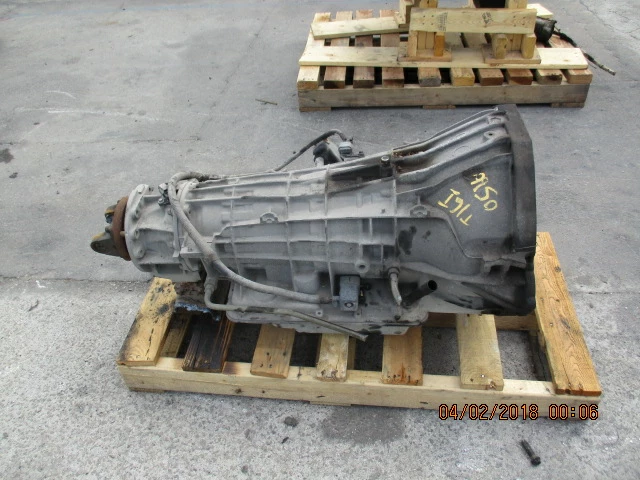Navigating through the complexities of technology often involves understanding a maze of product codes and model numbers that can be perplexing, even for tech-savvy individuals. The alphanumeric code 6c3p-7000-kb b2 is a prime example, representing more than just a random sequence of letters and numbers.
This code serves as a precise identifier, providing crucial details about the product’s design, specifications, and its specific role within a broader technological framework. Each section of the code carries significance, helping to classify the product in terms of usage, industry, or compatibility with other components. By breaking down these codes, one can gain valuable insights into the product’s functions and its place in different tech sectors, from consumer gadgets to specialized industrial tools. Understanding such identifiers plays a key role in helping both consumers and professionals make informed choices in the ever-changing world of technology.
Breaking Down The 6c3p-7000-kb b2 Code
The code “6c3p-7000-kb b2” may initially appear as a random set of characters, but each segment carries specific meaning once analyzed in detail:
- 6c3p: The first part, “6c3p,” likely refers to the product’s model family or series within the manufacturer’s range. The “6c” portion could indicate the sixth generation or a specific category focused on certain functionalities, while “3p” may denote the third variant within this family, offering distinct configurations or feature sets tailored for different user needs.
- 7000: This numeric value generally acts as a model identifier, often signifying key attributes like performance, capabilities, or capacity. In many cases, a number such as “7000” implies a high-tier model that delivers advanced features or higher specifications, making it suitable for more demanding tasks or environments.
- kb: The “kb” portion is likely associated with a unit of measurement, often pertaining to data storage or processing. If it refers to kilobytes, it could suggest that this model has particular characteristics related to memory size, data management, or overall efficiency in handling information, making it ideal for data-intensive applications.
- b2: The suffix “b2” likely represents a specific version or revision of the product. This could indicate it is part of the second batch or a newer iteration that incorporates
improvements or fixes over the original version. These updates often focus on optimizing performance or resolving previous issues to keep the model competitive and reliable.
This breakdown shows that each part of the code provides insight into the product’s generation, performance level, data handling capacity, and version history.
Potential Applications Across Various Technology Sectors
To comprehend the full importance of the “6c3p-7000-kb b2” designation, it’s crucial to evaluate its relevance across various technology sectors:
Information Technology (IT): In the IT world, this code could signify a high-capacity server, data storage solution, or other critical infrastructure components designed to handle extensive data loads. These models would be vital in environments that require exceptional performance, reliability, and efficient data management. Whether for cloud storage, database systems, or enterprise-level computing, a model with such specifications would be essential to ensuring continuous, top-tier performance.
Networking Devices: In the realm of networking hardware, such as routers, switches, or hubs, the “6c3p-7000-kb b2” label may suggest enhanced data throughput, improved network stability, and advanced security features. Networking equipment marked with these kinds of identifiers is typically optimized to handle significant data traffic, ensuring reliable and stable connections, whether for large enterprises or home networks with demanding connectivity needs.
Consumer Electronics: In consumer tech, the designation “6c3p-7000-kb b2” might relate to high-performance products like smart TVs, gaming systems, or media hubs. Devices with this kind of identifier would likely offer faster processing power, superior graphics or display quality, and sophisticated interfaces, making them ideal for consumers who seek cutting-edge technology in their daily devices.
Embedded Systems: For embedded systems—found in things like automotive controllers, smart appliances, or industrial automation components—this code might represent a crucial part like a processor or microcontroller. In these scenarios, the details in the code help ensure compatibility, maximize efficiency, and meet specific performance requirements. Engineers and developers can rely on the precision of these codes to select components that align with stringent operational standards.
Decoding these types of product codes not only assists in identifying the appropriate model but also ensures that the technology chosen is well-suited for its intended application, ultimately enhancing performance and user experience.
The Significance Of Deciphering Model Numbers: Why “6c3p-7000-kb b2” Matters
Model numbers like “6c3p-7000-kb b2” are much more than product labels—they serve as essential reference points that offer critical insights into a product’s capabilities and its intended use. Grasping the details behind these numbers is key to making informed decisions, ensuring smooth integration with existing systems, and simplifying support when issues arise. Here’s a breakdown of why understanding model numbers matters:
Better Decision-Making: Model numbers carry crucial information about a product’s features, performance, and potential applications. For consumers and professionals alike, decoding these numbers allows for better comparisons between versions, making it easier to select the product that best suits their specific needs. Whether for personal use, business, or industrial environments, knowing what each part of the model number means helps streamline the buying process and reduces the chance of choosing the wrong product.
Ensuring Seamless Integration: When adding new components to an established setup, understanding the model number is vital to ensuring compatibility. Factors like connectivity, power requirements, and software compatibility can all be deduced from the model number, which helps prevent potential issues during integration. For instance, integrating a network device such as a router or switch into an existing IT infrastructure requires thorough compatibility checks. Identifying the right model ensures that the new addition will function smoothly within the existing system, saving time and resources.
Optimizing Support and Maintenance: In times of troubleshooting, having accurate model information can make resolving technical problems faster and easier. Model numbers give support teams a clear understanding of the product’s specifications, including its features and known issues. With precise model data, customer service can provide more tailored solutions, from software updates to firmware patches, leading to quicker resolutions and minimizing downtime. This level of precision ensures that users experience efficient support, keeping systems operational with minimal disruption.
In summary, fully understanding model numbers like “6c3p-7000-kb b2” equips users with the knowledge to make smarter choices, ensure smooth integrations, and address technical issues effectively. As technology continues to advance, this attention to detail becomes an invaluable skill for optimizing both performance and product longevity.
The Significance Of Model Numbers: Going Beyond “6c3p-7000-kb b2” Fundamentals
Model numbers serve a more vital role than simply identifying a product—they unlock a wealth of details crucial for choosing, maintaining, and effectively using technology. Here’s why uderstanding these codes is so important:
Simplifying Product Comparisons: Model numbers allow you to distinguish between different versions within a product line. This makes it easier to compare key aspects like features, performance, and cost. Whether you’re assessing products from the same brand or different manufacturers, knowing the model number helps you choose the option that fits your specific needs.
Assisting in Maintenance and Upgrades: When it’s time to upgrade or maintain a product, the model number becomes indispensable. It ensures that replacement parts, firmware updates, or added components are compatible with your device. This precision prevents compatibility issues, reducing the risk of costly errors or equipment malfunctions.
Streamlining Inventory and Asset Management: For businesses managing tech inventories, model numbers are critical for organizing and tracking products. They simplify asset management, assist in warranty tracking, and ensure the correct products are dispatched or serviced. Proper labeling with model-specific details helps businesses avoid confusion and operate more efficiently.
Enabling Product Customization: Many models come with customization options for hardware and software. Understanding the model number helps IT teams or users identify which configurations are possible and which are compatible with the existing system. This enhances the product’s performance and value, allowing for a more tailored user experience.
Ensuring Compliance with Regulations: Certain products must meet specific industry standards, such as safety certifications or energy efficiency ratings. Model numbers can indicate if a product complies with necessary regulations, which is crucial for businesses operating under strict industry guidelines.
Verifying Authenticity and Resale Value: If you’re buying or selling used technology, a model number helps verify the product’s authenticity and specifications. This ensures transparency in transactions and allows for accurate determination of the item’s fair market value, promoting buyer confidence and trust.
In summary, model numbers provide essential information that goes beyond basic identification. They help ensure compatibility, guide product comparisons, support efficient maintenance, and enhance transparency in purchases. Understanding these codes equips users with the knowledge to make smarter decisions and optimize their technology use.
FAQs
What is a model number, and why is it important?
A model number is a unique identifier assigned to a specific product or version within a product line. It provides crucial details about the product’s features, specifications, and performance, helping users choose the right model and ensuring compatibility with other equipment or upgrades.
How can understanding a model number help with product comparison?
By decoding the model number, you can compare key aspects such as performance levels, features, and price points between different products. This allows you to select the product that best meets your needs, whether for personal, business, or industrial use.
How do model numbers help in maintenance and upgrades?
Knowing the model number ensures that you use compatible parts, firmware, and components when maintaining or upgrading a product. This prevents costly errors, reduces downtime, and ensures the product continues to perform optimally.
Can model numbers help with inventory management?
Yes, for businesses managing large inventories of technology products, model numbers are essential for organizing, tracking, and maintaining stock. They also streamline processes like warranty tracking and asset management.
How does a model number indicate a product’s regulatory compliance?
Many model numbers include information about certifications, such as energy efficiency or safety standards. This is crucial for businesses that must adhere to industry regulations or legal requirements, ensuring the product meets necessary standards.
Why is a model number important for resale value and authenticity?
When buying or selling used technology, a model number confirms the product’s specifications and authenticity. It helps determine a fair market value and builds trust between buyers and sellers by providing accurate product information.
Conclusion
Model numbers are more than simple product identifiers—they serve as essential guides to understanding the intricacies of technology. From aiding in product comparisons to ensuring compatibility for upgrades, these codes unlock key information that enhances decision-making, streamlines maintenance, and supports inventory management. Additionally, they provide insight into a product’s regulatory compliance, customization options, and even its resale value. By understanding model numbers, users and businesses alike can make smarter choices, ensuring their technology investments align perfectly with their needs and expectations.
Read More: News Week Blog



